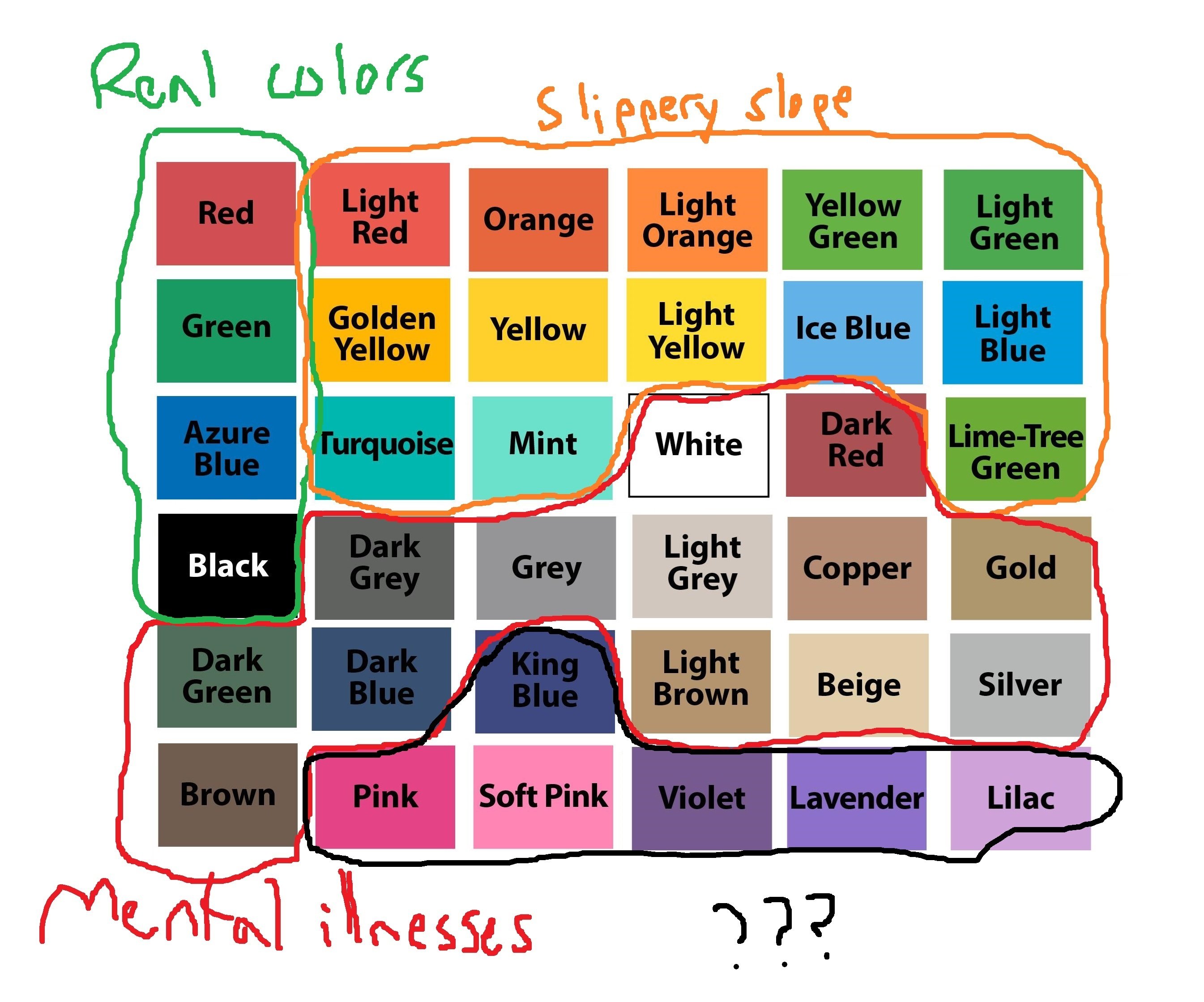this post was submitted on 24 Nov 2024
186 points (87.8% liked)
196
16591 readers
2260 users here now
Be sure to follow the rule before you head out.
Rule: You must post before you leave.
founded 1 year ago
MODERATORS
you are viewing a single comment's thread
view the rest of the comments
view the rest of the comments

I'm having trouble following you here, but it sounds like you're just saying that the other colora are derived from mixing the primaries. that doesn't make the colors you get from that a mental illness??
is mud not real because it's just wet dirt? is steel not real because it's just iron with added carbon? that's silly.
if your only point is that non primary colors are made by mixing primary colors then congrats, you've taught a kindergarten lesson very badly.
Aren't primaries magenta, cyan and yellow? I was under the impression that the is a thing because monitors emit light, but in nature surfaces reflect it, hence the primari colors "shidt".
I agree with you, the other commenter is cooked as hell to insist that their limited understanding of colours is absolute.
They are for subtractive color. Additive is RGB. But it's not that the colors are "different" per se, just that properties of light versus pigment are different when blending. Your eyes still interpret both the same.
I was saying there are times when you can't treat other colors as being made form primaries, specifically when the spectrum will later be separated. (by diffraction or by materials with a complex spectral response)
for example, you could have 2 clear yellow sheets that look identical when placed in front of a full spectrum white light. However, one lets through red and green and one lets through yellow wavelengths. Suddenly now they behave very differently when you put them in front of a green light - the one that only lets through yellow looks black and the one that lets through green looks green.
going back to the part where I labeled yellow as a slippery slope, its because we can't really see whether there are yellow wavelengths or not in examples like these or others
also, a fun side note, you can actually see diffraction patterns by looking through any aperture (but a diffraction grating will make it more obvious) and these respond noticeably differently to all wavelengths and look wrong if you only consider the primaries. So, technically, if you're looking at any scene through any sort of camera/lens system/eye, you can't treat the scene as only having 3 primaries as it would look (imperceptibly) different if you considered all wavelengths. Actually, recreating this video in Python is what got me thinking about this. If you look at a very bright white point of light made of very specifically only red green and blue wavelengths you might actually be able to see this, it should look like
instead of
(its very subtle and you might need to zoom in but it looks a lot more noisy)